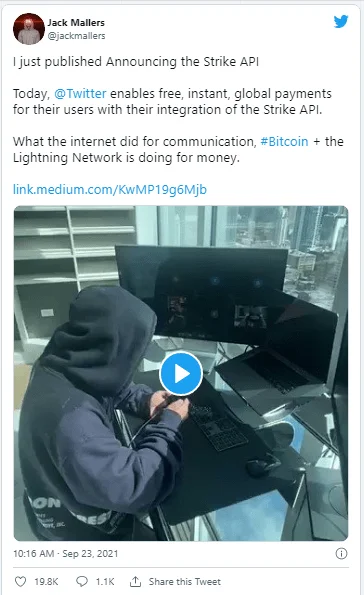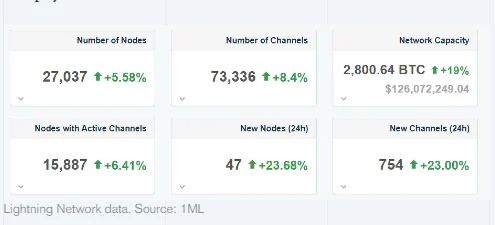Lightning Network, Bitcoin’s second layer protocol has witnessed an increase in activity following Twitter’s decision to use the network as a means of payments support.

Over the previous 24 hours, the number of new nodes and channels on the Lightning Network has climbed by 23.68 percent and 22.24 percent, respectively.
The increase in traffic comes after Twitter announced on Thursday that it has implemented support for Bitcoin-based payment tools such as Lightning wallets.
Lightning Network is a second-layer scaling solution for Bitcoin that aims to improve user privacy while speeding up transactions and lowering fees.
The protocol focuses on micropayments, which opens up a number of novel use cases, including new revenue models for content creators and social media tipping.
Tipping is another goal of Twitter’s new feature, which includes the integration of Strike, a Bitcoin payment program built on top of the layer-2 network.

According to current data from 1ML, there are a total of 27,037 Lightning nodes online, with 15,887 of them containing active payment channels. Over the course of the day, the number of new channels climbed by 8.4%, reaching a total of 73,000.
The network’s capacity has expanded by 19%, and it’s currently just a few steps away from reaching a new milestone of 3,000 Bitcoin locked in payment channels.

Lightning Network’s use is increasing
“It’s incredibly exciting to see the Lightning Network being used in the real world for the first time. According to Jeff Gallas, CEO and founder of Fulmo, a Berlin-based Lightning Network business, “more and more parts of the puzzle are fitting together.”
He went on to clarify that Twitter’s Lightning Network support allows users to send money to anyone in the world. “Instantly, at a very little cost, wherever in the world. Open-source monetary innovation’s power, “Gallas stated.
The Lightning Network is currently considered an experimental and new technology. Nonetheless, it has seen some significant changes in recent weeks and months. Paxful, a global peer-to-peer crypto exchange, was one of the first to use the technology earlier this month.
Another project that added Lightning Network support is Substack, a popular online platform that allows writers to set up their own subscription-based newsletters.
Last month, Substack announced that it would use the protocol to accept Bitcoin for payments for crypto-related publications.
